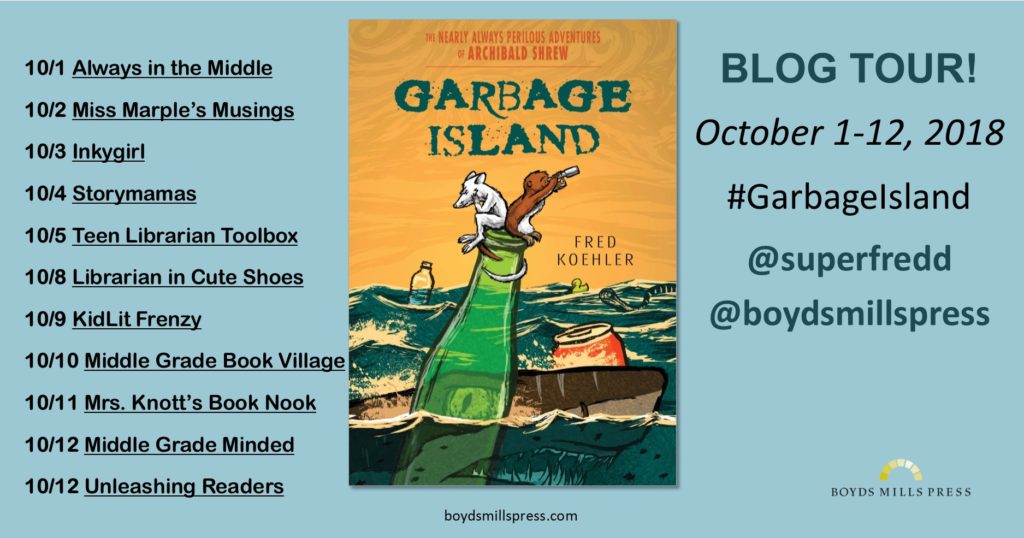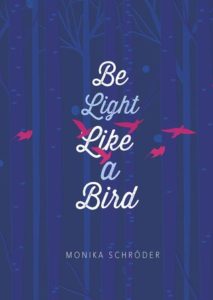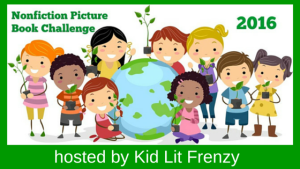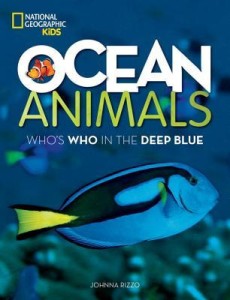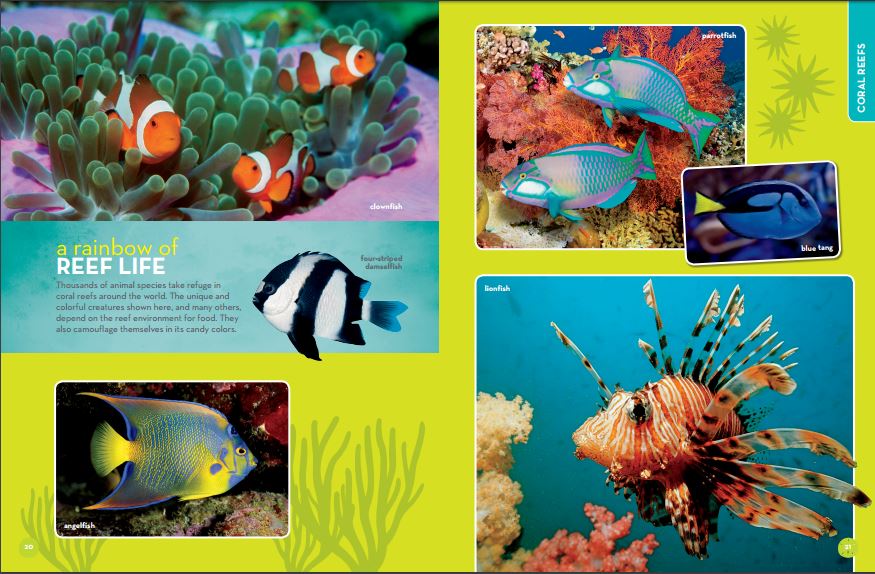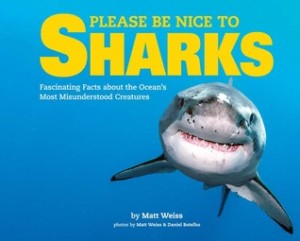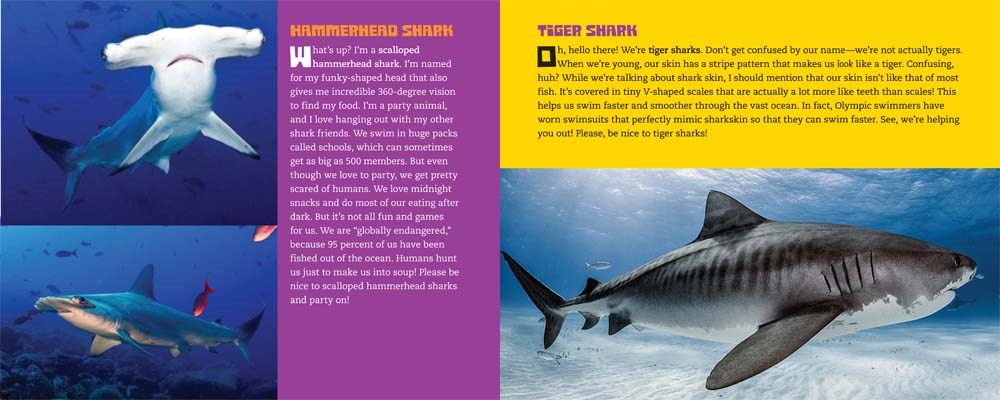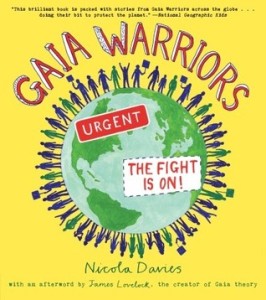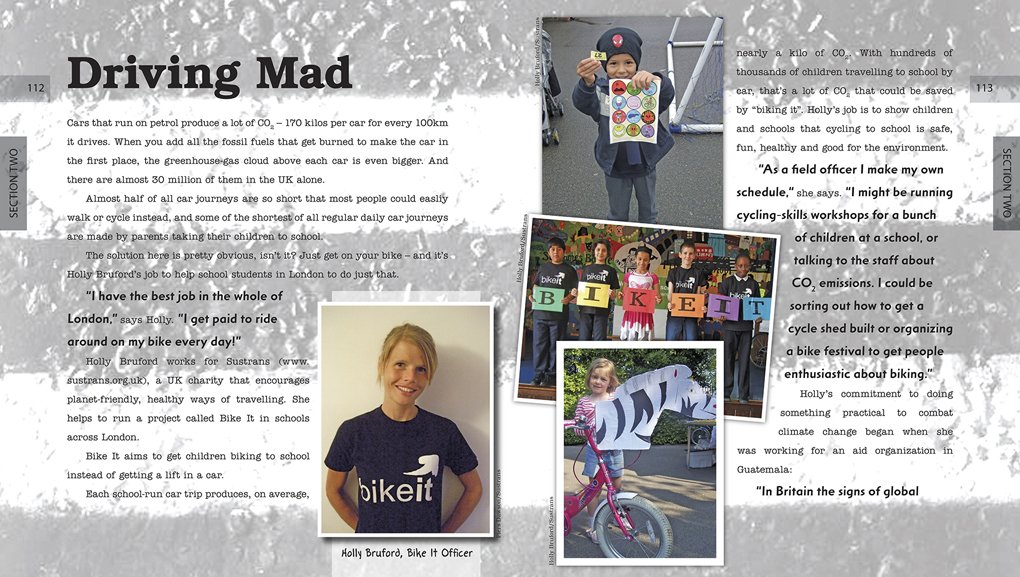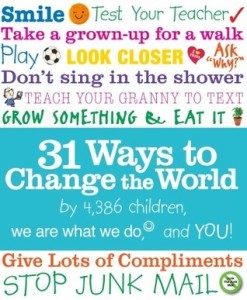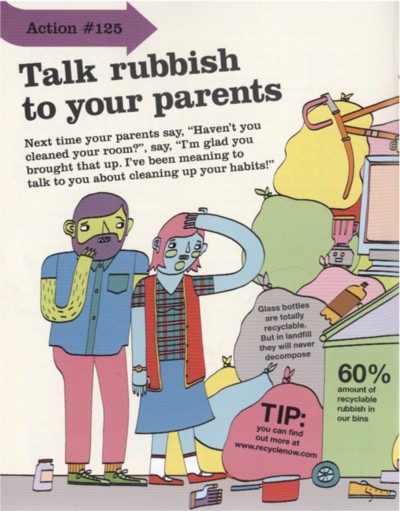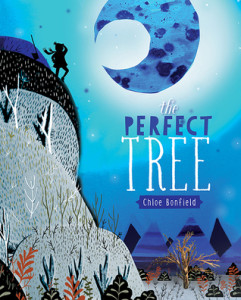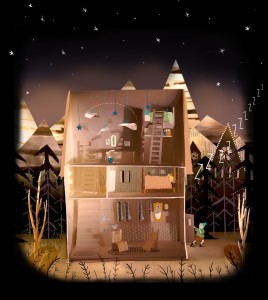Cross Curricular Integration of Climate Change Education Using Middle Grade Fiction
With pollution and climate change being, arguably, the most serious issue facing the youth of this century, I authored a book, Warrior Kids, that’s suitable for middle grade through high school. The storyline educates and empowers kids to lead the way in solving this crisis. Included within the plot, and added to the back of the book in the form of Extension Activities, are numerous ways kids as young as elementary school age can take an active role in ensuring a healthier planet for themselves and their own children far off in the future.
Teachers need to implant the belief in students that they can be the change they want to see in the world. When dealing with the environment, adults need to give kids hope and not preach that the sky is falling, which is the message of so many environmental groups in their pursuit of donations. I wrote an entire post about how kids need hope, not fear. Fear paralyzes us, while hope encourages us toward action. My book is filled with hope and positive solutions to the environmental crisis that kids and teens can readily embrace.
I’m sharing cross-curricular ideas that almost all teachers can utilize, whether or not they incorporate Warrior Kids into their classes. Warrior Kids does, however, contain a plethora of ideas that middle and high school students should find of interest discussing and debating. The eBook of Warrior Kids is free for any teacher who requests it.
- SCIENCE: At all grade levels, classes can plant gardens around school and have the students tend them. Each grade level can have a different garden or a different responsibility in maintaining one larger garden. Organizations like Common Vision can help you get started. Especially in big cities, kids have little contact with nature and don’t really have a sense of what will be lost if we destroy it. Having them nurture living things and spend time in a garden is an easy way to reawaken their innate connection to the natural world.
- MATH: there are so many “numbers” issues your students could work on computing. For example, take plastic water bottles. Based on America’s current annual disposal of water bottles (each of which can only be recycled once) how many acres of land will be needed in the form of landfill to hold all the discarded bottles, both those recycled and turned into a then-non-recyclable item, or those initially tossed into the trash? These calculations can be done for five years into the future, ten years, twenty years, etc. In this way, the students will become tangibly aware of the negative impact of buying water in plastic bottles. The same principal can apply to the numbers of trees we cut down versus how many trees there are worldwide, and to a host of other environmental concerns.
- CHEMISTRY: have the students learn in greater depth the ingredients that make up the various kinds of plastics and why certain ones are chemically unhealthful. (There is a section at the back of Warrior Kids that breaks down the different plastics based on toxicity.) Your students can also explore the new biodegradable plastics that are currently available, and others that are still experimental, and debate the pros and cons of each. Chemistry students can also study the effects that “fracking” chemicals have on the environment. Fracking is a method of digging for oil or natural gas. Over six hundred chemicals are added to water during the fracking process – toxic chemicals like benzene and formaldehyde. What is the physical impact on the eco-system when these chemicals leak into groundwater or dissipate into the air? What is the impact on human, animal, and plant life?
- BIOLOGY: have your students explore the scientific data that sets two degrees Celsius as the threshold over which the planet cannot safely become any warmer. Have them consider random factors like major volcanic eruptions and how those might affect global temperatures and the climate as a whole. Have them calculate various temperature increases on sea levels and existing plant and animal life. What species are more likely to survive higher temperatures and why? Will parts of the earth become uninhabitable for humans due to heat levels? If so, at what temperature might that occur?
- EARTH SCIENCE: students can study the link between heavily fracked areas like Oklahoma and an increase in seismic activity. Is there a direct or indirect connection, and does proximity of wells to known and unknown earthquake faults pose a serious threat to people?
- ENGLISH/ELA: have your students go through Warrior Kids and break down the various speeches given by Lance (the eighteen-year-old leader of the youth movement) as examples of persuasive writing. Does he back up his words with evidence? Does he use effective rhetoric? Which aspects are the most persuasive and which are the least and why? If teachers don’t want to use the book, students can use this technique with real activists in the climate arena who speak to the United Nations or other bodies. Are their words substantive, or just platitudes with no specifics to back up their arguments? Take one of their speeches and re-write it to make the message more meaningful and powerful.
- SPEECH/DEBATE: students can analyze the effectiveness of Billy’s “Alien Invasion” analogy in his address to the joint session of Congress (or any of Lance’s speeches, as noted in number five, or real speeches delivered by climate activists.) Have students write their own speeches to congress, the UN, or even their parents about why our behaviors need to change so the planet can heal. They can practice their speeches on each other, in front of the class, and even in front of other classes throughout the school. They could attend a school board meeting and attempt to persuade the district to become more sustainable.
- BUSINESS/ECONOMICS: have your students calculate the costs of having the school run on solar power. What would be upfront costs to the district and what would be the savings over time? They can pitch their ideas to the principal and the school board. They can even write a grant to obtain money and make the project a reality.
- HISTORY: have students explore and report back on the taxpayer subsidies that have been given to fossil fuel companies over the decades. What were the lobbying efforts based on? Which party or politicians have been most in the pocket of these industries, and what would happen politically if all such subsidies were cut off?
- GOVERNMENT: have students study up on campaign finance laws – why is it illegal for 501(c)(3) non-profits to campaign for or endorse candidates for public office? They can explore environmental activist groups that have 501(c)(3) status to see if they have ever campaigned for a candidate. If so, did that violation of law affect their non-profit status in any way? If it didn’t, do your students think it should have? Why or why not?
- MUSIC: have students compose songs that address the climate issue from the perspective of youth. Put these songs on YouTube and share them with like-minded young people around the world.
- ART: create posters/paintings that promote recycling, sustainability, and renewable energy. Enter these works into art contests. There are a number of contests that promote environmental artwork and offer prize money that can be used for eco-friendly projects.
- DANCE: interpretive dances that illustrate the negative impacts of pollution and climate change could be an amazing way for the student who isn’t a great writer or speaker to express his/her ideas.
- ALL CURRICULAR:
- Start an Earth Warriors Crew with your class (EW is the fictional group in my book) and get other classes involved. It’s a great community service opportunity and the kids can actively help the move toward sustainability.
- Each class can have a FB Group page, and link it to the Warrior Kids FB Group Page, if they so choose. They can share their accomplishments rather than selfies (a theme in the book.)
- They can order t-shirts like the ones worn in the book (I’m happy to share the logo or even order the shirts for you.) They can also create their own shirts with whatever slogan they feel works for them in their community.
- Have cool giveaways to your students who come up with the most creative idea for sustainability, recycling, reusability, or even creative ways to get the cooperation of reluctant adults (either people they know or politicians.)
- Organize petition drives for needs in your school or community.
- Have your class start paper collections. The students can sort all the paper by colors for proper recycling.
- If there isn’t already a strong recycling program for bottles and cans, have them start one.
- Where I taught high school, the maintenance staff would throw old computers into the trash. Have your kids make sure all old electronics around the school site are e-waste recycled. If there isn’t a city location nearby, Salvation Army takes e-waste and makes sure it’s recycled properly.
These are just a few of the activities I present at the conclusion of Warrior Kids. There are others, including a list of fifty simple things we can all do to help save the planet. Kids in every curricular area can take almost any of those fifty activities and turn them into a class or school/wide project. I also provide a list of organizations that students can explore in order to learn about climate change and become more involved in making a difference.
Thematically, Warrior Kids posits that we need to shift our human consciousness away from “me” centered thinking over to “we” centered thinking if the earth, and the human race, are to truly heal. When we focus on seemingly small things – like cutting plastic waste, for example – we are taking a huge step toward shifting that consciousness because our actions have a global impact. Just by each of us, and our students, reducing the use of plastic, we improve the entire world and become one with teachers and students in other countries who are doing the same. It’s simple, it’s unifying, it’s elevating, and ultimately it’s a major step toward preserving a healthy planet for the next generation. The time to act is now. As Billy says to his crew in Warrior Kids: “Earth Warriors, assemble!”
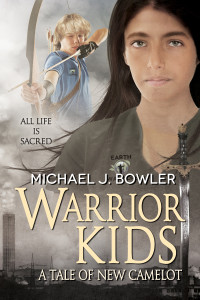
The future looks bleak unless eighteen-year-old Lance and his New Camelot Earth Warriors can save the planet from catastrophic climate change.
Spurred by twelve year-olds Billy, Enya, Itzamna, and his ten-year-old brother, Chris, Lance creates a branch of Earth Warriors, a youth-led movement designed to save the earth from its greatest enemy – greed.
His involvement leads to Earth Warrior crews springing up all across America. Millions of kids leap into action, paralyzing the country and alarming the rich and powerful.
Having adopted his father’s philosophy of doing what’s right, rather than what’s easy, Lance makes serious enemies when he calls out New Camelot donors who represent fossil fuel or other polluting industries, and then barely escapes a series of “accidents” designed to kill him.
When he challenges the United States Congress to step up and act immediately on the climate crisis, the attacks on him escalate. With the majority of America’s kids on his side, Lance and his young Earth Warriors prepare for the United Nations Conference of the Parties in Paris, where they will call upon world leaders to stop talking about sustainability and start acting on it.
But whoever wants him dead isn’t giving up. Will Lance and his crew live long enough to even get to Paris?
Warrior Kids is a standalone tale set within the Children of the Knight universe.
About the Author: Michael J. Bowler is an award-winning author of nine novels––A Boy and His Dragon, A Matter of Time (Silver Medalist from Reader’s Favorite), and The Knight Cycle, comprised of five books: Children of the Knight (Gold Award Winner-Wishing Shelf Book Awards; Reader Views Honorable mention; Runner-Up Rainbow Awards), Running Through A Dark Place (Bronze Award Winner-Wishing Shelf Book Awards), There Is No Fear, And The Children Shall Lead, Once Upon A Time In America, Spinner (Winner Hollywood Book Festival; Honorable Mention San Francisco Book Festival; Bronze Medal from Readers’ Favorite; Literary Classics Seal of Approval; Runner-Up in Southern California Book Festival; Honorable Mention in the Halloween Book Festival), and Warrior Kids: A Tale of New Camelot.
His horror screenplay, “Healer,” was a Semi-Finalist, and his urban fantasy script, “Like A Hero,” was a Finalist in the Shriekfest Film Festival and Screenplay Competition. He partnered with two friends as producer, writer, and/or director on several ultra-low-budget horror films, including “Fatal Images,” “Club Dead,” and “Things II.”
He grew up in San Rafael, California, and majored in English and Theatre at Santa Clara University. He went on to earn a master’s in film production from Loyola Marymount University, a teaching credential in English from LMU, and another master’s in Special Education from Cal State University Dominguez Hills.
He taught high school in Hawthorne, California for twenty-five years, both in general education and to students with learniag disabilities, in subjects ranging from English and Strength Training to Algebra, Biology, and Yearbook.
He has also been a volunteer Big Brother to eight different boys with the Catholic Big Brothers Big Sisters program and a thirty-year volunteer within the juvenile justice system in Los Angeles.
He has been honored as Probation Volunteer of the Year, YMCA Volunteer of the Year, California Big Brother of the Year, and 2000 National Big Brother of the Year. The “National” honor allowed him and three of his Little Brothers to visit the White House and meet the president in the Oval Office.
He is currently writing a novel based on his screenplay, “Like A Hero.”
His goal as an author is for teens to experience empowerment and hope; to see themselves in his diverse characters; to read about kids who face real-life challenges; and to see how kids like them can remain decent people in an indecent world.
You can find him at:
www.michaeljbowler.com
FB: michaeljbowlerauthor
Twitter: BradleyWallaceM
Blog: www.sirlancesays.wordpress.com
tumblr: http://michaeljbowler.tumblr.com/
Pinterest: http://www.pinterest.com/michaelbowler/pins/
Amazon: http://www.amazon.com/Michael-J.-Bowler/e/B0075ML4M4
Instagram: StuntShark
Thank you to Michael for his great cross-curricular post! These activities will be wonderful for the classroom and even would work well around Earth Day in April!
 and
and
